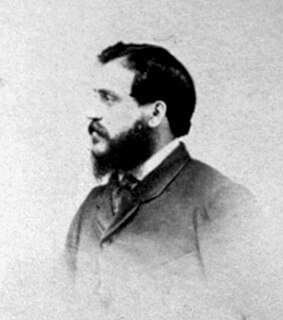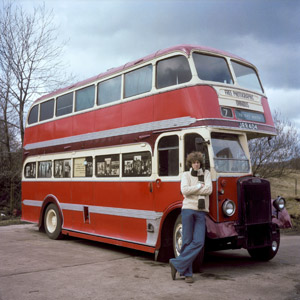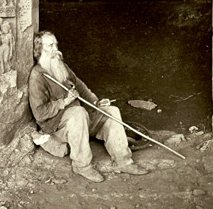Related Research Articles

Sebastião Ribeiro Salgado Júnior is a Brazilian social documentary photographer and photojournalist.

Sooni Taraporevala is an Indian screenwriter, photographer and filmmaker who is the screenwriter of Mississippi Masala, The Namesake and Oscar-nominated Salaam Bombay! (1988), all directed by Mira Nair. She also adapted Rohinton Mistry's novel Such A Long Journey(2000) wrote the films Dr. Babasaheb Ambedkar her directorial debut Little Zizou as well as her latest film Yeh Ballet (2020) A Netflix Original that she wrote and directed.

Wedding photography is a specialty in photography that is primarily focused on the photography of events and activities relating to weddings. It may include other types of portrait photography of the couple before the official wedding day, such as a pre-wedding engagement session. On the official wedding day, the photographer(s) will attempt to provide portrait photography, as well as '''documentary photography''' coverage to document the different wedding events and rituals throughout the wedding day(s).

Felice Beato, also known as Felix Beato, was an Italian–British photographer. He was one of the first people to take photographs in East Asia and one of the first war photographers. He is noted for his genre works, portraits, and views and panoramas of the architecture and landscapes of Asia and the Mediterranean region. Beato's travels gave him the opportunity to create images of countries, people, and events that were unfamiliar and remote to most people in Europe and North America. His work provides images of such events as the Indian Rebellion of 1857 and the Second Opium War, and represents the first substantial body of photojournalism. He influenced other photographers, and his influence in Japan, where he taught and worked with numerous other photographers and artists, was particularly deep and lasting.

William Klein is an American-born French photographer and filmmaker noted for his ironic approach to both media and his extensive use of unusual photographic techniques in the context of photojournalism and fashion photography. He was ranked 25th on Professional Photographer's list of 100 most influential photographers.

Linnaeus Tripe was a British pioneer of photography, best known for his photographs of India and Burma taken in the 1850s.
Dr. Diongu Badaturuge Nihalsingha was an accomplished Sri Lankan film director, cinematographer, editor, producer. He was noted for his versatility : as a film cameraman, as a film director, as a (pioneering) television director, as an administrator, and as a teacher. He is a pioneer who introduced professional television production to Sri Lanka, commencing with Sri Lanka's and South Asia's first color teledrama, Dimuthu Muthu. He was the founding Chief Executive Officer and General Manager of Sri Lanka's National Film Corporation and a distinguished alumni of the then University of Ceylon, Peradeniya. He is the only Sri Lankan who has been conferred Life Fellowship of the Society of Motion picture and Television Engineers USA, the oldest film organisation in the world, established in 1915. The Society determines film and television standards worldwide.

Toshiki Ozawa, was a Japanese photographer.
Bourne & Shepherd was an Indian photographic studio and one of the oldest established photographic businesses in the world. Established in 1863, at its peak, it was the most successful commercial firm in 19th-and early 20th-century India, with agencies all over India, and outlets in London and Paris, and also ran a mail order service. A devastating fire in 1991 destroyed much of the studio's photographic archive and resulted in a severe financial loss to the firm. The long-term impact of the fire, legal difficulties with the Indian government, which owned the studio building, and the increasing dominance of digital technology, finally forced the studio's closure in June 2016. At its closure, the studio had operated continuously for 176 years.

Marcus Bartley was an Anglo-Indian cinematographer who played a key role in the success of many Indian films. While at school, Bartley was an amateur photographer. He joined the Times of India in 1935 as press photographer, and then became a newsreel cameraman for British Movietone under the auspices of the Times of India. He was the cinematographer of all time classics like Pathala Bhairavi, Maya Bazaar and Chemmeen.

Daniel Meadows is an English photographer turned maker of digital stories, and a teacher of photography turned teacher of participatory media.

Indian News Parade was a cinematic newsreel produced by the Indian government between September 1943 and April 1946. Originally named Indian Movietone News, it was produced in response to the Anglo-centric newsreels created by British and American companies. It suffered a poor critical reception, and production ceased shortly after the end of World War II.
The Films Division of India (FDI) commonly referred as Films Division was established in 1948 soon after independence of India. It was the first state film production and distribution unit, now under the Ministry of Information and Broadcasting, Government of India, primarily to "produce documentaries and news magazines for publicity of Government programmes" and cinematic record of Indian history.

T.N.A. Perumal or Thanjavur Nateshacharya Ayyam Perumal was a wildlife photographer from Bangalore, Karnataka, India.

Major Robert Gill (1804–1879) was an army officer, antiquarian, painter and photographer in British India. He is best known for his paintings copying the frescoes of the Ajanta Caves. Gill was the first painter – after their rediscovery in 1819 – to make extensive copies of the Buddhist cave paintings, which mostly date to the 5th century CE. His surviving copies and drawings remain significant in Ajanta studies as the originals have significantly deteriorated since his time.

Ezra Mir was an Indian film-maker, known for his documentary films.

The Army Film and Photographic Unit was a subdivision of the British armed forces set up on 24 October 1941, to record military events in which the British and Commonwealth armies was engaged. During the war, almost 23 percent of all AFPU soldiers were killed in action; the AFPU was disbanded in 1946.
Waman Thakre is an Indian photographer and a former deputy director at the Directorate of Panchayat and Social Service of the Government of Madhya Pradesh. He is a Fellow of the Royal Photographic Society and the Photographic Society of America and is a recipient of the Shikhar Award of the MP State government. The Government of India awarded him the fourth highest civilian honour of the Padma Shri, in 2007, for his contributions to Arts.

Walter Bird (1903–1969) was a British photographer. Bird became known for his images of nudes and jointly set up a studio, Photo Centre Ltd., with John Everard and Horace Roye in 1939. From 1958 he was chief photographer for J. Russell & Sons, eventually purchasing the business in 1961. From 1958 to 1967 he was the official photographer for the National Photographic Record, initiated by the National Portrait Gallery to record important and influential citizens. He was a fellow of the Royal Photographic Society.
O. P. Sharma is an Indian photographer based in Delhi. He heads the photography department of Triveni Kala Sangam. Earlier, he taught photography at Modern School for many years. His works have been widely exhibited in India as well as other countries .He is the recipient of many awards and honours, and is credited with mobilising the international photography community to observe 19 August as World Photography Day.
References
- ↑ The Photographic Journal: Including the Transactions of the Royal Photographic Society of Great Britain... Royal Photographic Society. 1961.
- 1 2 Popular Photography - ND. August 1945. pp. 40, 65, 114..
- ↑ A directory of Indian documentary. Mumbai International Film Festival for Documentary, Short & Animation Films. 1998. p. 27.
- ↑ Gulazāra; Govind Nihalani; Saibal Chatterjee (2003). Encyclopaedia of Hindi Cinema 26. Popular Prakashan. pp. 278–279. ISBN 978-81-7991-066-5.